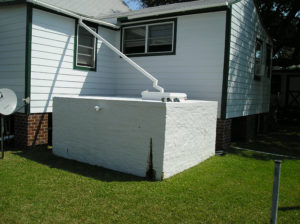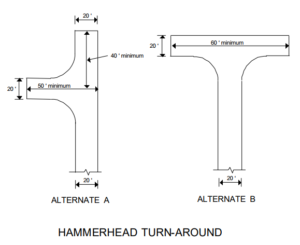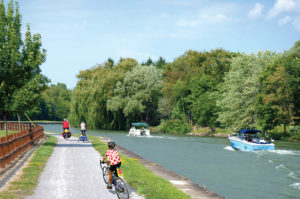This is a collection of resources pertaining to Green Infrastructure. The resources listed here are referenced in the CDRPC GI Code Audit.
Bio-retention
Areas landscaped for catching and filtering stormwater before entering the ground. Bio-retention can be of any scale and consists of a grass buffer strip, sand bed, ponding area, organic layer or mulch layer, planting soil, and plants.
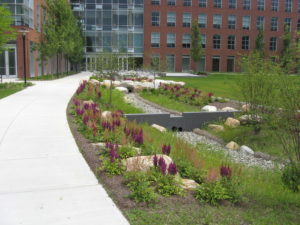
Cistern
a tank for storing collected stormwater, creates a reservoir for non-potable uses such as flushing a toilet or irrigation.
For more information, click here.
Combined Sewer Overflow (CSO)
A combined sewer system (CSS) collects rainwater runoff, domestic sewage, and industrial wastewater into one pipe. Under normal conditions, it transports all of the wastewater it collects to a sewage treatment plant for treatment, then discharges to a water body. However, when rainwater is falling and collecting at a faster rate than the system can handle, it creates an overflow.
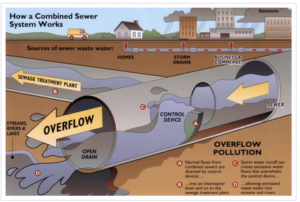
Complete Streets
Streets that have accommodation for everyone. They serve pedestrians, motorists, cyclists, and public transit riders. Complete streets offer safe crossings and easy access to shops, and also has green space intermixed.

FEMA Flood Insurance Program
A program that enables property owners in participating communities to purchase insurance protection, administered by the government, against losses from flooding, and requires flood insurance for all loans or lines of credit that are secured by existing buildings, manufactured homes, or buildings under construction, that are located in a community that participates in the NFIP. The program is offered by the Federal Emergency Management Agency (FEMA).
Intermittent Streams
Streams that are only present hours or days after rainfall and wet seasons. These streams cease to flow for weeks and months at a time when weather is warm and dry.
http://www.wetlandsprofessional.com/intermittent-and-ephemeral-streams.html
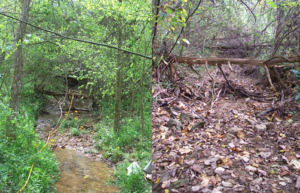
Hammerhead
A type of alternative turnaround structure that can be used in low density residential areas.
Multi-Use Trail
A path physically separated from motor vehicle traffic by an open space or barrier and either within a public right of way or easement, which accommodates two-way non-motorized travelers including pedestrians, bicyclists, joggers, and skaters.
Natural Resource Inventory (NRI)
An NRI compiles and describes important naturally occurring resources such as forests, wetlands, surface and ground waters, and farmland within a given locality (e.g., municipality, watershed, or region).
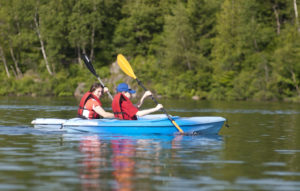
Passive Recreation
Non-consumption uses of space, such as wildlife observation, biking, walking, and canoeing. The objective of passive recreation is to limit the disturbance on ecosystems while enjoying the outdoors.
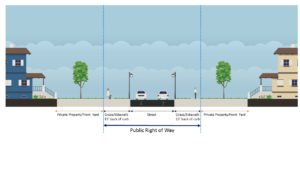 Right of Way Width
Right of Way Width
The width of road and sidewalks, as well as the green space in between the two, that is reserved for public use. Beyond the right of way is typically private property.
Transfer of Development Rights (TDR)
An incentive based program that allows landowners to sell development rights from their land to a developer or other interested party who then can use these rights to increase the density of development at another designated location.
Center for Land Use Education: Planning Implementation Tools Transfer of Development Rights (TDR)

Queuing Street
Some local roads (usually longer, more continuous roads) have 2 travel lanes, whereas others are “queuing streets”. A queuing street has only 1 travel lane (when on-street parking is well-used) and drivers must pull over to allow oncoming traffic to pass. Queuing streets have 2 main benefits:
- Containing built-in traffic calming to lower the speed of traffic, and
- Minimizing the pavement width, which reduces the demand on the drainage system and minimizes the environmental impact.
(http://www.surrey.ca/city-services/13369.aspx)
Resources from The Center for Watershed Protection
Introduction to Better Site Design and the Code and Ordinance Worksheet: Runoff Reduction Practices
